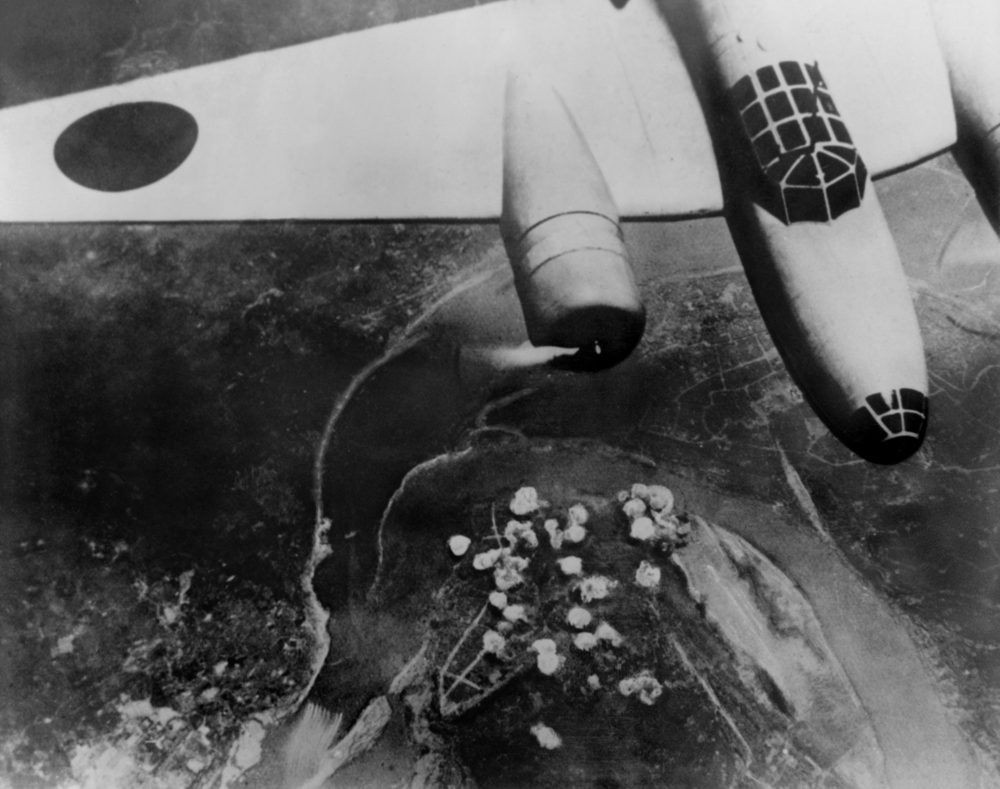
The human race has had a long history with dog breeds, and although there is still a debate about exactly when we domesticated dogs, the general consensus between researchers is that it likely happened between 20,000 and 40,000 years ago. In the United States, we are clearly a nation of dog lovers as they are more popular than cats, with a recent study suggesting that nearly 50 million households in the US own a dog.
With the American Kennel Club currently registering 197 dog breeds, we are spoiled for choice when it comes to sharing our homes with our four-legged friends. So today, not only are we going to tell you which 12 breeds are the most popular in the country, again according to the American Kennel Club, but where they actually originated from.

12. Australian Shepherd – Origins: Europe
Although the name might suggest otherwise, the Australian shepherd doesn’t actually have its roots in “the Land Down Under,” but instead can be traced back to the herding dogs of Europe. Sometime in the early 1800s, many farmers in the Basque region, an autonomous community in northern Spain, decided to take their chances by traveling to Australia bringing their European shepherd dogs along with them.
In their time in Australia, the Basque shepherd dogs were crossed with collies, giving us the breed we know today. Their introduction to America came when the Basque farmers moved to the US. As they came from Australia, American’s naturally assumed the dogs originated there are well, hence the name. They were quickly incorporated into western “cowboy” culture and still appear in rodeo shows to this day.

11. Pembroke Welsh Corgi – Origins: Wales
While the Pembroke Welsh corgi and Cardigan Welsh corgi both obviously originated in Wales, up until 1934, they were considered to be the exact same breed. The origins of both breeds go as far back as the 10th century in Pembrokeshire, a county in the south-west of Wales, and despite their diminutive stature, they were used in the herding of cattle as they nip the heels of the livestock to herd them in the direction the farmer wanted.
However. The laws and policies would soon change and farmers would change to using more traditional herding dogs. Although they would lose their status as herding dogs, they became very popular with the British public. No one more so than the reigning monarch, Queen Elizabeth II of England, who has, over the course of her nearly 70 years on the throne, owned more than 30 corgis.

10. Dachshund – Origins: Germany
Originally developed in Germany as hunting dogs, their body shape helped them dig and enter tunnels, and their floppy ears helped keep dirt out of their ear cavities. The Dachshund is more affectionately known as the wiener dog or the sausage dog. Introduced to the United States in 1885, it wouldn’t gain popularity until the mid-1930s where it would be given a new name, “badger dogs.”
The reason for the name change, despite actually being used for flushing out badgers, was to distance itself from its country of origin as the American public had negative feelings towards Germany due to the ongoing events that led to World War II. After all, it wasn’t the dog’s fault the two countries were at war. Although kept by royal courts all over Europe, including Queen Victoria, one of the most famous Dachshunds was one named Lump, who owned one of the most influential artists of the 20th century, Pablo Picasso.

9. German Shorthaired Pointer – Origins: Germany
In Germany, another larger breed developed in the 19th century for hunting was the German shorthaired pointer. Historians widely agree that this highly energetic, streamlined yet powerful dog was created by crossing traditional continental pointers with old Spanish pointers around the 1860s. German hunters would eventually perfect the breed as they wanted a dog with a sharp sense of smell and eagerness to retrieve.
The breed grew quickly in popularity across Europe by the late 1800s but wouldn’t make its way to the UK until the early 1920s and would soon be imported to the US in the mid-1920s. The American Kennel Club would officially recognize the breed in 1930. If you wish to own a German shorthaired pointer, it should be noted that they are known as “velcro dogs,” which means they exhibit distress and behavior problems when separated from their handler.

8. Rottweiler – Origins: Germany
The origins of this breed might be associated with Germany, but the Rottweiler can trace its ancestry back to the mastiff-style dogs that ancient Romans used in war. We associate them with Germany because, after the Roman wars, the breed was put to work on farms in the German town of Rottweil either as herding dogs or protection dogs.
Known as Rottweiler Metzgerhund, meaning Rottweil butchers’ dogs, they gained the town’s name as they were used for pulling carts laden with butchered meat to market. With the emergence of railways in the 1800s, they began serving as police dogs or heavy-duty working dogs. The formal history of the breed dates back to 1901 and has changed little since then. By 1931, the breed was officially recognized by the American Kennel Club.

7. Beagle – Origins: England
The origins of the beagle are still debated to this day, but what we do know is that in the 11th century, William the Conqueror brought the St. Hubert Hound and the Talbot hound to Britain. These two breeds were then crossed with Greyhounds to give them the speed and stamina required for deer hunting. By the 18th century, several new breeds were created in England, and by 1840, there were four different beagle varieties.
In the early 1870s, an Illinois man recognized they had a great sense of smell and superior tracking instincts, so he brought beagles to the U.S. The introduction of these dogs is widely believed to have created the standard for American beagles today. By the 1950s, the breed became part of the culture due to Courage the Cowardly Dog and the Peanuts character Snoopy being billed as “the world’s most famous Beagle.”

6. Poodle – Origins: Germany
You can be forgiven for associating the poodle as some cynologists, someone who specializes in dogs’ care and training, still maintain today that the breed originated in France. However, this is contested as, apart from the Germanic name “Pudel” in German, which is derived from the Low German word “puddeln,” which means “to splash,” there are several German 17th-century artistic works that clearly show the poodle.
Some contend that poodles are related to an ancient Asian herding dog, while others suggest that poodles traveled with the Moors to Portugal. Whatever the origin, poodles were most definitely used as hunting dogs in Germany due to their curly, water-resistant coat. By the time they did come to France, where they were frequently used in circuses due to their intelligence, athleticism, and all-round cuteness, it was in France that selective breeding created the wide varieties of poodles we know today.

5. Bulldog – Origins: England
The origins of this popular breed have a rather troubling history as they were initially bred for aggression. Pioneered in England in the 13th century for the grim practice of “bullbaiting,” where the dogs were used to harass and bring down bulls. Although in 1835 violent blood sports were banned across England because it was not only seen as a public nuisance but animal cruelty became a real concern among civilized people. It would briefly go underground pit-dog fighting before falling out of favor entirely.
However, the breed was still popular so breeders set about refining its demeanor and looks to make it more mellow with softer features. The breed was introduced to the United States as early as the 17th century by working-class immigrants who brought their working dogs with them to the American South. It was originally used for the same terrible purpose. It would eventually be used for personal and property protection on plantations and ranches.

4. Golden Retriever – Origins: Scotland
We usually refer to ‘breeders’ when it comes to creating dog breeds. However, when it comes to the golden retriever, this dog, one of the Western world’s most recognizable and popular breeds, can trace its creation to a single individual, Sir Dudley Marjoribanks. Marjoribanks, a Scottish businessman and a Liberal politician, wanted a suitable gundog to assist him in finding and retrieving game, usually quail, dove, or duck on his Scottish estate Guisachan in the late 19th-century.
He spent years crossing several breeds before eventually creating the golden retriever by mixing his “yellow retriever” with a now-extinct spaniel breed, as well as the Irish setter and bloodhound. At the same time as it debuted in a British dog show in 1908 and was officially recognized by The Kennel Club in 1911, golden retrievers soon began arriving in North America. The American Kennel Club recognized it in 1932.

3. German Shepherd – Origins: Germany
Despite its wolf-like appearance, the German Shepherd’s origins are not as ancient as you might first think as its origins can be traced back to attempts to standardize dog breeds in the 1850s. In 1899, Max von Stephanitz, an ex-cavalry captain and former student of the Berlin Veterinary College, firmly believed dogs should be bred for working. So, when he saw a dog named Hektor Linksrhein at a dog show that year, he immediately purchased the dog, renamed it Horand von Grafrath, and founded the Verein für Deutsche Schäferhunde (Society for German Shepherd Dogs).
Due to their keen sense of smell and sharp mind, they were first used as herding dogs before gaining international recognition after soldiers returned home from World War I speaking highly of the dogs’ intelligence. In the UK the name was changed to “Alsatian Wolf Dog” due to anti-German sentiments after the First World War. It would only regain its name in the UK in 1977. The breed would rise in popularity in the United States after the popular television character Rin Tin Tin.

2. French Bulldog – Origins: France
Descended from there over the Channel cousins, the English bulldog, the French bulldog’s origins would come from lace workers from Nottingham, England, after they settled in Normandy, France, after being displaced by the onset of the Industrial Revolution. They took miniature Bulldogs with them when they moved to France, known as ‘Toy Bulldogs.’
These dogs are believed to have been crossed with native terriers to create the popular breed. They soon became wildly popular with society ladies, artists, writers, and fashion designers in late 1800s Paris. They gained the name we know today, the French Bulldog (Bouledogue Francais in French). Americans had been importing French Bulldogs for a while. Still, it was not until 1885, when they were brought over in order to set up an American-based breeding program, that their popularity exploded.

1. Labrador Retriever – Origins: Newfoundland, Canada
The number one most popular breed in America is of course the Labrador Retriever. Originally developed in the United Kingdom from duck retrievers and fishing dogs imported from the independent colony of Newfoundland (now part of Canada), they got their name from the Labrador region of that colony.
The breed became well known in the 1800s when several English noblemen recognized it as not only an excellent sporting and hunting dog, but also saw them as loyal, obedient, and playful, with many of them being kept as companion dogs. Over the next century, the British breeders worked to refine the breed which gives us the wide variety of Labradors we see today. By the early 1900s, American hunters and farmers learned of the breed’s work ethic and began importing them. The American Kennel Club recognized Labrador Retrievers in 1917.
If you want to learn even more about the many dog breeds we share our lives with then this book is a comprehensive guide to all our amazing four-legged friends. Click HERE





